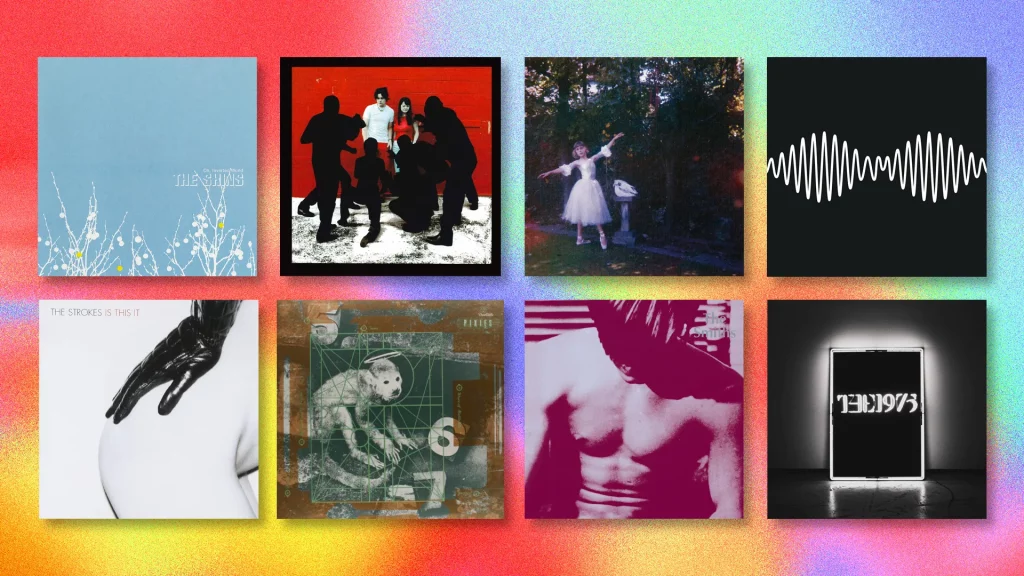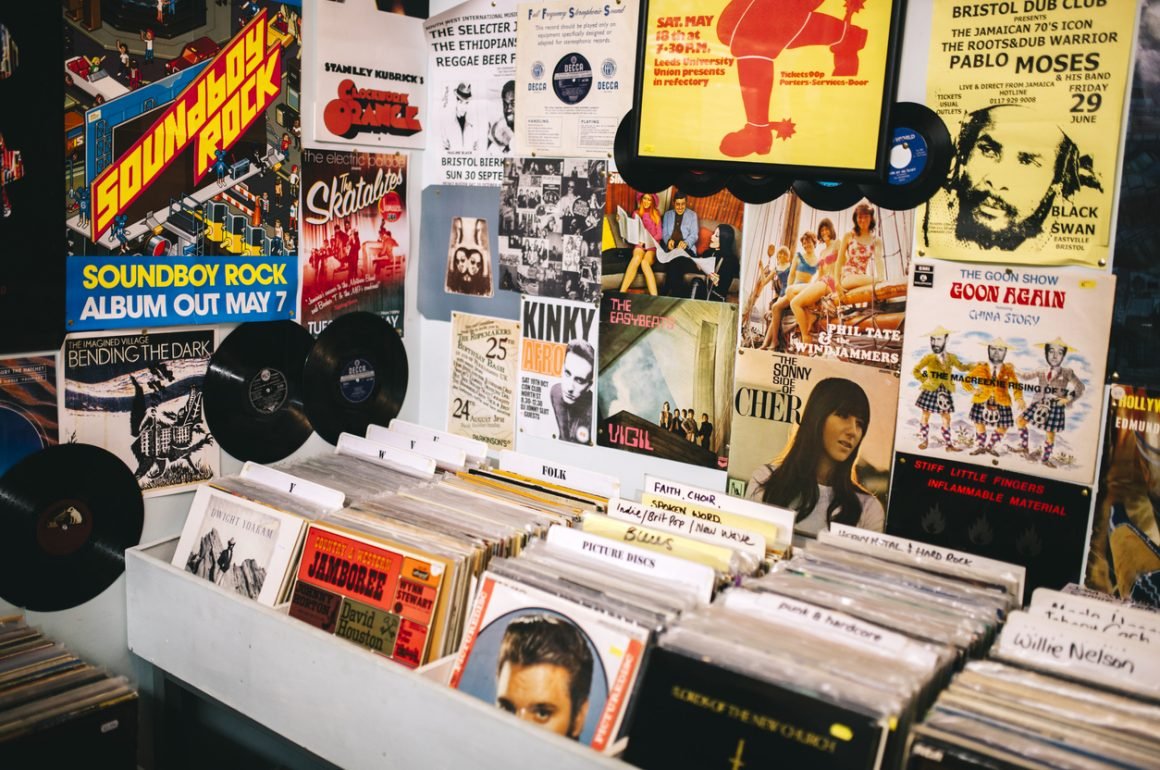Indie music has been making waves in the collective consciousness, especially within the digital landscape where online forums and streaming platforms have facilitated direct connections between artists and listeners.
This article aims to provide a comprehensive understanding of indie music, exploring its essence, characteristics, and diverse interpretations.
In recent years, indie music has captured the hearts of music enthusiasts worldwide. With the advent of digital platforms and the internet, indie artists can now effortlessly share their creations with a global audience.
This article delves into the multifaceted world of indie music, exploring its true essence beyond the common misconceptions.
What Exactly is Indie Music?
Often misunderstood, indie music is not a specific genre, but rather a term derived from “independent.”
It refers to music that is not financially associated with major record labels such as Sony BMG, Universal Music Group, and Warner Music Group, which collectively dominate a significant portion of the music market.
Indie: Not Just a Genre
Indie music has also become associated with certain genres like folk, experimental, or alternative.
This association is often due to influential artists who inspired the current generation of indie musicians.
However, it’s essential to remember that indie music encompasses a broad range of styles and influences.
Indie Music Defined

The definition of indie music has evolved over time. Initially, it referred to music released by independent artists without ties to major labels.
Today, indie music has come to represent specific genres, although it is not a genre in itself.
Genres Associated with Indie Music
Some genres, such as folk, experimental styles, and alternative music, are closely linked to the independent music scene.
Many artists who explore these genres often opt for independent recording labels, seeking creative freedom outside the mainstream industry.
Navigating the Independent Music Scene
Discovering independent musicians can be challenging, as most eventually sign with major labels to reach a broader audience.
However, there are ways to identify indie artists by researching the labels that release their music. Most independent labels proudly display their independence, setting themselves apart from major corporate entities.
The Significance of Independent Labels
Signing with an independent label does not diminish an artist’s “indie” status. In fact, independent record labels offer artists greater creative control and ownership of their music.
They provide a platform for artists to express themselves freely without the pressures of conforming to industry norms.
The Creative Freedom of Indie Artists
One of the most appealing aspects of indie music is the artistic freedom it affords musicians. Independent artists can explore unique sounds, experiment with various genres, and release music that resonates with their vision, not dictated by commercial interests.
Indie music has significantly influenced the music industry’s landscape, fostering diversity and innovation.
It encourages musicians to take risks, leading to the emergence of new sounds and movements that challenge mainstream conventions.
The Evolution of Indie Music
The concept of indie music has evolved over the years, reflecting societal changes and technological advancements.
From its humble beginnings in local scenes to its current global reach, indie music continues to adapt and reinvent itself.
Why Indie Music Appeals to Audiences
Indie music’s authenticity and originality attract audiences seeking unique musical experiences. The emotional depth and relatable narratives often found in indie compositions forge deep connections between artists and their listeners.
The internet and digital platforms have allowed indie music to transcend geographical boundaries. Independent artists from diverse backgrounds can now share their music with a global audience, fostering cultural exchange and appreciation.
Identifying Indie Music

If you’re wondering how to identify indie music, the answer may not be straightforward, as it depends on the context and what you’re seeking.
Indie music, short for independent music, is a broad term that encompasses a diverse range of artists who operate outside the mainstream music industry.
In this article, we’ll delve into the various aspects that define indie music and how to discover this unique and authentic sound.
Indie music has gained popularity over the years as music enthusiasts seek unique and authentic sounds beyond mainstream offerings.
It encompasses various genres and artists who maintain control over their creative process, distribution, and artistic direction. The process of identifying indie music may vary, and it often involves exploring non-traditional music sources.
Breaking Free from the Mainstream
To discover genuine indie music, it’s essential to conduct thorough research. Start by learning about the labels an artist is associated with or uses for distribution. Artists who remain independent are often found on non-mainstream music sources.
How Rock and Roll Changed the World: The Emotive Journey of Music
The Struggle of Independent Artists
For many independent music artists, the goal is to be heard by a broader audience, and that often comes with challenges.
Some indie musicians eventually choose to collaborate with major industry contributors, either as a choice to expand their reach or out of necessity to access resources.
Indie Artists and Music
Here, we have included the top 50 Indie bands or Artists in the list below including their formed year.
| Band | Formed Year |
| The Smiths | 1982 |
| Pixies | 1986 |
| Pavement | 1989 |
| Dinosaur Jr. | 1984 |
| Belle & Sebastian | 1996 |
| Yo La Tengo | 1984 |
| Modest Mouse | 1992 |
| Guided By Voices | 1983 |
| Elliott Smith | 1994 |
| Arcade Fire | 2001 |
| Neutral Milk Hotel | 1989 |
| Built to Spill | 1992 |
| The Strokes | 1998 |
| Spoon | 1993 |
| Beat Happening | 1982 |
| Wilco | 1994 |
| The Go-Betweens | 1977 |
| Death Cab for Cutie | 1997 |
| Sleater-Kinney | 1994 |
| Sebadoh | 1986 |
| Broken Social Scene | 1999 |
| LCD Soundsystem | 2002 |
| Morrissey | 1982 |
| Low | 1993 |
| Bright Eyes | 1995 |
| The Shins | 1996 |
| The Dismemberment Plan | 1993 |
| Interpol | 1997 |
| Galaxie 500 | 1987 |
| Animal Collective | 2003 |
| The Wedding Present | 1985 |
| The Libertines | 1997 |
| Liz Phair | 1993 |
| Franz Ferdinand | 2002 |
| Slint | 1986 |
| Arctic Monkeys | 2002 |
| Red House Painters | 1989 |
| The Decemberists | 2000 |
| The Hold Steady | 2003 |
| Yeah Yeah Yeahs | 2000 |
| Sufjan Stevens | 1999 |
| The National | 1999 |
| TV on the Radio | 2001 |
| Royal Trux | 1987 |
| Superchunk | 1989 |
| The Magnetic Fields | 1989 |
| …And You Will Know Us by the Trail of Dead | 1994 |
| Will Oldham (Bonnie ‘Prince’ Billy/Palace) | 1998 |
| The Housemartins | 1983 |
| Mercury Rev | 1989 |
Indie Rock: Where Alternative Meets Mainstream
Indie rock is one of the most prominent subgenres of indie music, largely due to its blend with alternative rock, making it more accessible to a wider audience. The following bands exemplify the essence of indie rock:
Pixies: Known for their distinctive sound and influential role in alternative music, Pixies have produced iconic songs like “Where Is My Mind?” that continue to inspire artists worldwide.
Arctic Monkeys: Hailing from England, Arctic Monkeys have captured hearts with their energetic performances and hits like “Do I Wanna Know?” and “I Bet You Look Good on the Dancefloor.”
The Decemberists: With their folk-rock sound and poetic lyrics, The Decemberists have given us gems like “The Rake’s Song” that showcase their storytelling prowess.
Vampire Weekend: Infusing indie rock with elements of Afro-pop, Vampire Weekend’s tracks like “Diane Young” and “Unbelievers” have garnered widespread acclaim.
The Smiths: An iconic band from the ’80s, The Smiths’ song “How Soon Is Now?” remains a classic representation of indie rock.
Obscure Gems and Memorable Tracks
Indie rock songs can range from obscure to famous, and many have inspired numerous covers and tributes. Here are some noteworthy tracks that have left a lasting impact:
Pixies’ “Where Is My Mind?” has become an anthem for the indie music community, with its dreamy and introspective vibe.
Nirvana’s “Smells Like Teen Spirit” may have propelled the grunge movement, but its raw energy and rebellious spirit embody indie sensibilities.
The Smiths’ “How Soon Is Now?” remains a timeless track that captures the essence of indie rock with its haunting melodies and poetic lyrics.
If you’re looking to explore lesser-known tracks, consider these gems:
The Decemberists’ “The Rake’s Song” tells a dark and gripping tale, perfect for those seeking something different.
The Vampire Weekend’s “Ladies of Cambridge” offers a blend of catchy rhythms and clever wordplay.
Florence + the Machine: Soul-Inspired Indie Rock
Florence + the Machine is an indie artist who transcends traditional genre boundaries and creates music that is soul-inspired indie rock. Here are two of their must-listen tracks:
“Never Let Me Go”: This emotionally charged song showcases Florence Welch’s powerful vocals and evokes a sense of vulnerability.
“Breath of Life”: Featured in the film “Snow White and the Huntsman,” this epic track highlights the band’s ability to create grand and cinematic soundscapes.
Indie Pop:
The Blend of Independence and Pop Sensibilities
Indie pop is another popular subgenre that fuses independent music artists with alternative pop elements. Here are some noteworthy examples of indie pop:
Mac DeMarco: With his laid-back and introspective style, Mac DeMarco has gained a devoted following. “Chamber of Reflection” is a standout track that captures his unique sound.
Belle and Sebastian: Known for their indie pop anthems, Belle and Sebastian’s “The State I Am In” is a beautiful representation of their signature sound.
Tegan and Sara: The duo’s song “Where Does the Good Go?” combines catchy melodies with heartfelt lyrics, making it a fan favorite.
Billie Eilish: While she has achieved mainstream success, Billie Eilish’s early tracks like “Ocean Eyes” showcase her indie roots and remarkable talent.
The Breakout Hits and Limitless Boundaries
Indie music is not confined to specific genres; it thrives on its diversity and openness to experimentation. Countless indie artists from various musical backgrounds have broken into the spotlight, proving that indie music knows no bounds.
Final Thoughts On Indie Music
Despite the stranglehold the big three record labels have on the music industry, indie music is still alive and well.
Many of the biggest names in music and all-time best-selling bands began their careers as indie artists before securing the bag with major record labels.
Indie music holds a special place in the hearts of many music enthusiasts. It is a realm of creativity and authenticity, free from the constraints of commercialization.
Independent artists have the freedom to experiment with various sounds and express their emotions genuinely, which resonates with listeners who crave something unique and heartfelt.
Today, it’s easier than ever for artists to get their work out there, though getting viral hits and getting the masses to see it is another story.
TikTok, YouTube, Spotify, and SoundCloud are all opportunities for indie artists to get noticed and develop a following, even sometimes to the point they can monetize their work.
The internet has democratized the music industry, allowing independent artists to reach a global audience with a click of a button.
Indie music embraces a wide array of unconventional genres, from dreamy lo-fi beats to experimental electronic sounds.
These genres often push the boundaries of what is considered mainstream, attracting listeners who crave innovation and diversity in their music choices.
In conclusion, the indie music scene is a thriving community of talented artists who continue to make their mark in the music industry.
Their dedication to artistic expression, coupled with the support of enthusiastic listeners, ensures that indie music will endure for years to come.
So, the next time you’re looking for new music to add to your playlist, consider exploring the world of indie music. Unearth hidden gems support independent artists, and be part of a global movement that celebrates creativity and authenticity in music.
The Role of Rock Music in Social and Political Change
FAQs
What is indie music?
Indie music refers to the work of artists and bands who operate independently, without signing with major record labels or distributors.
How can I find indie music?
Explore non-mainstream music sources, attend indie music festivals, listen to local live bands, and check out independent music playlists.
What genres are commonly associated with indie music?
Indie music encompasses various genres, including alternative rock, indie pop, folk, and experimental electronic.
Do indie musicians ever collaborate with major labels?
Yes, some indie musicians choose to collaborate with major industry contributors to gain a broader audience and access additional resources.
Can indie musicians make a living solely from their music?
While some indie artists can sustain themselves through their music, many also contribute to the music industry as composers and writers for popular artists.
